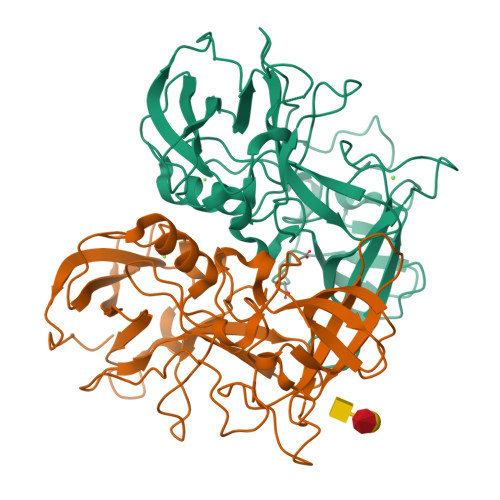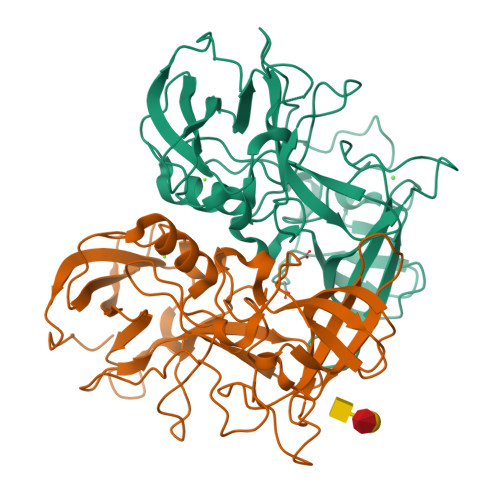Atomic resolution structural characterization of recognition of histo-blood group antigens by Norwalk virus
Choi, J.M., Hutson, A.M., Estes, M.K., Prasad, B.V.V.(2008) Proc Natl Acad Sci U S A 105: 9175-9180
- PubMed: 18599458
- DOI: https://doi.org/10.1073/pnas.0803275105
- Primary Citation of Related Structures:
2ZL5, 2ZL6, 2ZL7 - PubMed Abstract:
Members of Norovirus, a genus in the family Caliciviridae, are causative agents of epidemic diarrhea in humans. Susceptibility to several noroviruses is linked to human histo-blood type, and its determinant histo-blood group antigens (HBGAs) are regarded as receptors for these viruses. Specificity for these carbohydrates is strain-dependent. Norwalk virus (NV) is the prototype genogroup I norovirus that specifically recognizes A- and H-type HBGA, in contrast to genogroup II noroviruses that exhibit a more diverse HBGA binding pattern. To understand the structural basis for how HBGAs interact with the NV capsid protein, and how the specificity is achieved, we carried out x-ray crystallographic analysis of the capsid protein domain by itself and in complex with A- and H-type HBGA at a resolution of approximately 1.4 A. Despite differences in their carbohydrate sequence and linkage, both HBGAs bind to the same surface-exposed site in the capsid protein and project outward from the capsid surface, substantiating their possible role in initiating cell attachment. Precisely juxtaposed polar side chains that engage the sugar hydroxyls in a cooperative hydrogen bonding and a His/Trp pair involved in a cation-pi interaction contribute to selective and specific recognition of A- and H-type HBGAs. This unique binding epitope, confirmed by mutational analysis, is highly conserved, but only in the genogroup I noroviruses, suggesting that a mechanism by which noroviruses infect broader human populations is by evolving different sites with altered HBGA specificities.
Organizational Affiliation:
Verna Marrs Mclean Department of Biochemistry and Molecular Biology, Baylor College of Medicine, Houston, TX 77030, USA.






















